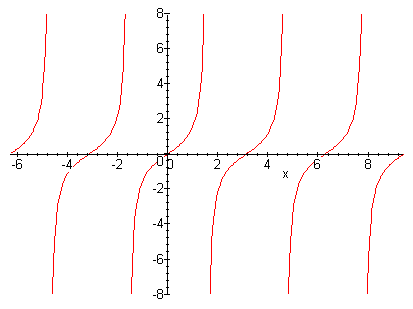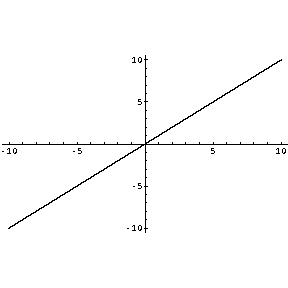(New page: Periodic functions are functions that repeat over and over for a specific period. More specifically, a function is periodic if there exists some number T>0 such that f(x)=f(x+T) for all p...) |
|||
| Line 1: | Line 1: | ||
| + | ==Periodic Functions== | ||
| + | |||
Periodic functions are functions that repeat over and over for a specific period. More specifically, a function is periodic if there exists some number T>0 such that f(x)=f(x+T) for all possible values of x. | Periodic functions are functions that repeat over and over for a specific period. More specifically, a function is periodic if there exists some number T>0 such that f(x)=f(x+T) for all possible values of x. | ||
One common example of this is the tangent function, which has a period of \pi. | One common example of this is the tangent function, which has a period of \pi. | ||
| − | [[Image:301-1_ECE301Fall2008mboutin]] | + | |
| + | |||
| + | [[Image:301-1_ECE301Fall2008mboutin.gif]] | ||
| + | |||
| + | ==Non Periodic Functions== | ||
| + | |||
| + | Non periodic functions are functions for which there exists no T>0 such that f(x)=f(x+T) for all possible values of x. | ||
| + | |||
| + | A simple example of this is y=x | ||
| + | |||
| + | [[Image:301-2_ECE301Fall2008mboutin.gif]] | ||
Revision as of 16:59, 4 September 2008
Periodic Functions
Periodic functions are functions that repeat over and over for a specific period. More specifically, a function is periodic if there exists some number T>0 such that f(x)=f(x+T) for all possible values of x.
One common example of this is the tangent function, which has a period of \pi.
Non Periodic Functions
Non periodic functions are functions for which there exists no T>0 such that f(x)=f(x+T) for all possible values of x.
A simple example of this is y=x



